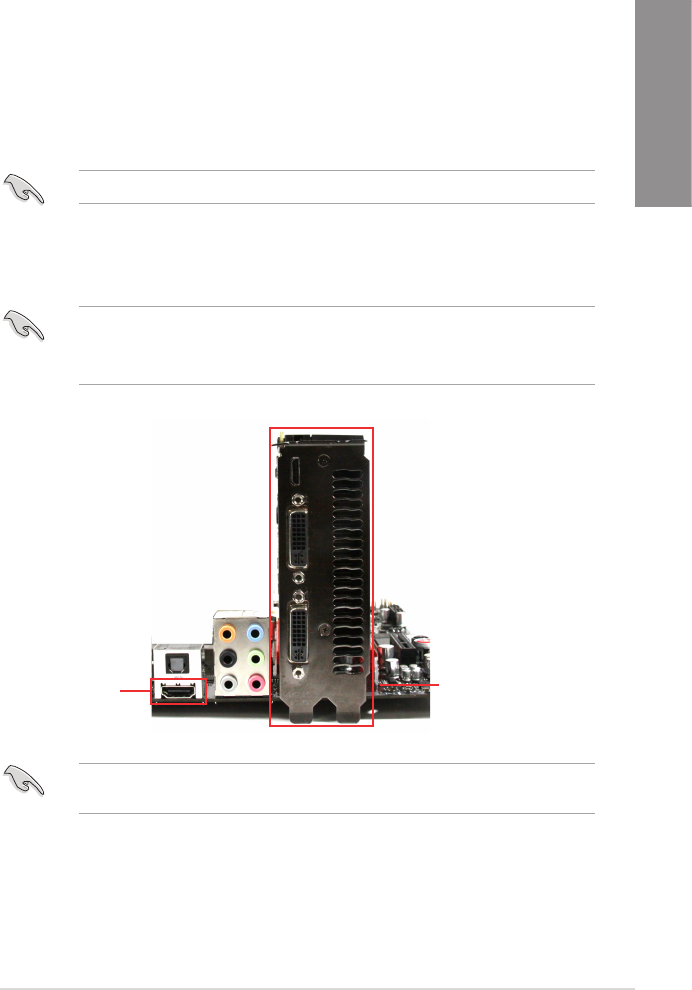User's Manual
Table Of Contents
- Safety information
- About this guide
- P8H77-V specifications summary
- Chapter 1: Product introduction
- Chapter 2: Hardware information
- 2.1 Before you proceed
- 2.2 Motherboard overview
- 2.3 Building your computer system
- 2.3.1 Additional tools and components to build a PC system
- 2.3.2 CPU installation
- 2.3.3 CPU heatsink and fan assembly installation
- 2.3.4 DIMM installation
- 2.3.5 Motherboard installation
- 2.3.6 ATX Power connection
- 2.3.7 SATA device connection
- 2.3.8 Front I/O Connector
- 2.3.9 Expension Card installation
- 2.3.10 Rear panel connection
- 2.3.11 Audio I/O connections
- 2.4 Starting up for the first time
- 2.5 Turning off the computer
- Chapter 3: BIOS setup
- Chapter 4: Software support
- Chapter 5: Multiple GPU technology support
- Appendices
- http://csr.asus.com/english/Takeback.htm

ASUS P8H77-V
5-5
Chapter 5
i-Mode
To use LucidLogix Virtu MVP in i-Mode, the display must be connected to the onboard video
output.
Ensure to set the Primary Display to iGPU in BIOS to activate i-Mode support.
d-Mode
To use LucidLogix Virtu MVP in d-Mode, the display must be connected to the installed
graphics card.
Ensure to set the Primary Display to PCIE or PCIE/PCI in BIOS to enable
d-Mode support.
d-Mode is recommended for an enhanced 3D gaming performance.
•
•
5.2.2 Setting up your display
LucidLogix Virtu MVP solution comes with two distinct modes that allows you to enjoy better
graphics either from your built-in video output (i-Mode) or from a discrete graphics card
(d-Mode).
d-Mode (VGA output from
discrete graphics card)
i-Mode (VGA output
from motherboard)
The motherboard’s IO ports and discrete graphic card is for reference only and may vary in
different models.










